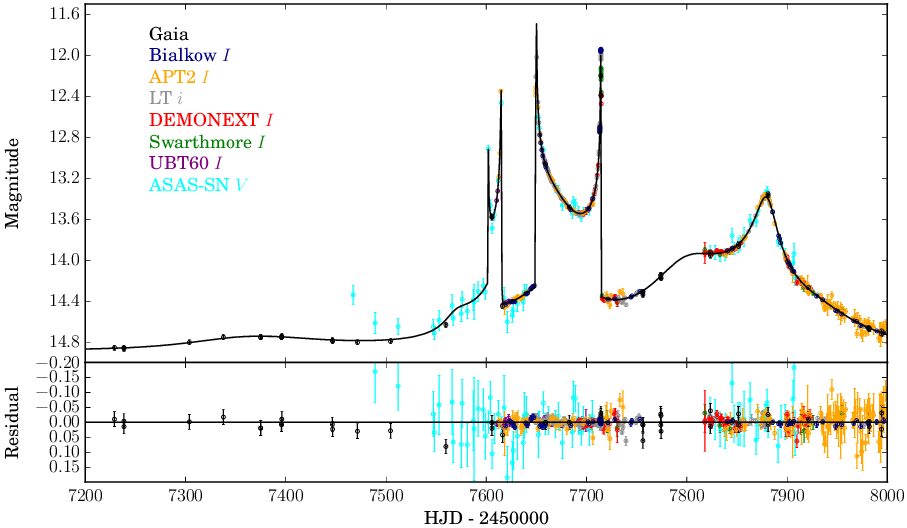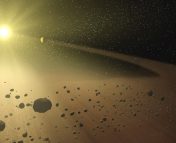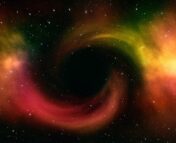Title: Wide Binaries from GAIA EDR3: Preference for GR over MOND?
Authors: Charalambos Pittordis, Will Sutherland
First Author’s Institution: The School of Physical and Chemical Sciences, Queen Mary University of London
Status: Submitted to Open Journal of Astrophysics; arXiv e-print [open access]
One of the biggest mysteries in astrophysics and cosmology today is dark matter; a hypothesized form of matter that is completely invisible to light (or any form of electromagnetic radiation for that matter), hence the name. Dark matter is believed to exist because observations of massive structures in the universe (galaxies in particular) show that they form, rotate, move, and evolve as if they contained many times more mass than is visible via the light that we receive from them. In particular, they suggest that around 85% of the matter in the universe is dark matter. This type of matter would be completely different from ordinary matter, perhaps made up of new, undiscovered elementary particles.
While the majority of the astronomical community accepts dark matter as the best solution to these observations of the universe, the lack of direct evidence of dark matter or an undisputable candidate particle does leave room for other explanations that don’t involve new types of matter. For example, one of the more popular non-dark-matter explanations argues for the modification of our understanding of Newtonian gravity at the extremely small scales of acceleration that are felt during galactic rotation. This would be akin to how our understanding of physics at tiny measurement scales was changed by the development of quantum physics. Such a theory is often known as ‘Modified Newtonian Dynamics’ – or MOND. MOND is currently a less-accepted hypothesis than dark matter, though, as there are many observations that MOND cannot explain as well as dark matter, alongside other outstanding problems.
Today’s paper proposes that observations of wide binary stars by the GAIA satellite could allow for a test that differentiates dark matter versus MOND predictions.
Twin Stars, Twin Theories
The authors of this paper postulate that wide binary stellar systems with separations larger than 7000 AU between the stars would have orbital accelerations low enough that they would fall below the limit at which MOND effects would be noticeable, while the system also remains small enough in scale that there would not be significant dark matter content between the stars. As such, the velocities of the stars’ orbits could be classically calculated with simple Keplerian dynamics and compared with the predictions given by modified gravity models.
The precision of the GAIA satellite and its latest DR3 data release could allow for observations accurate enough to distinguish MOND effects. While wide binaries orbit slow enough that any individual system cannot be perfectly modeled, a statistically large sample of the relative velocities of wide binary stars can be compared with results from simulations (assuming the binaries have random phases and inclinations).
To do so, the authors selected wide binaries from the GAIA EDR3 early data release within 300 pc of the solar system (as the full DR3 release had not come out yet while this paper was being written), as well as additional quality cuts, in order to obtain data from well-constrained observations of wide binaries whose relative velocities could be accurately measured. The velocity distributions of these selected stars are shown in Figure 1. At a first glance, the vast majority of stars appear to fall within the limits for Newtonian velocities, but at larger scales of orbital separation, more and more stars surpass this limit. This could be due to contamination from possible triple star systems and stellar flybys, poor constraints, or other effects… such as MOND.
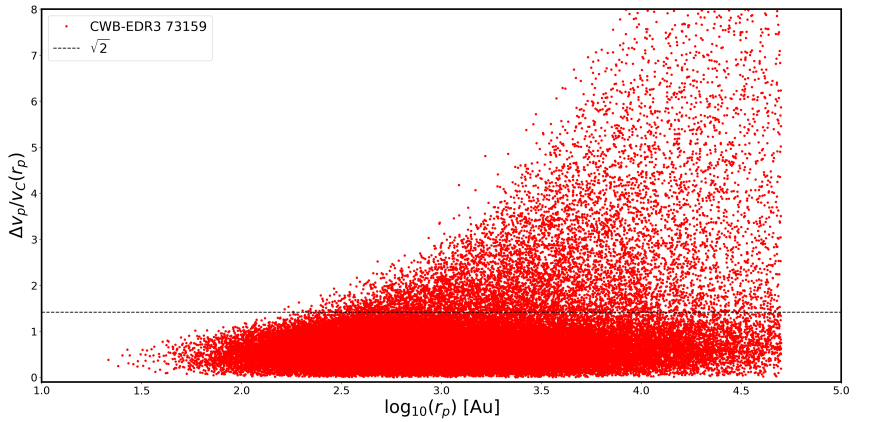
With the binaries selected, the authors then ran simulations of around five million wide binary orbits, with random values of semi-major axis and orbital eccentricity, under both Newtonian gravity and a particular modified gravity model, and compared their results to the observations.
A MOND of Evidence?
Once triple-star systems and stellar flybys had been taken into account, chi-squared tests conclusively showed that no matter what eccentricity distribution was used, Newtonian gravity models showed better fits to the observational data than the MOND model that was tested. In particular, the MOND model predicted significantly more wide binaries would have measured velocities between 1 and 1.5 times the Newtonian ones, which the data did not show, as can be seen in Figure 2.
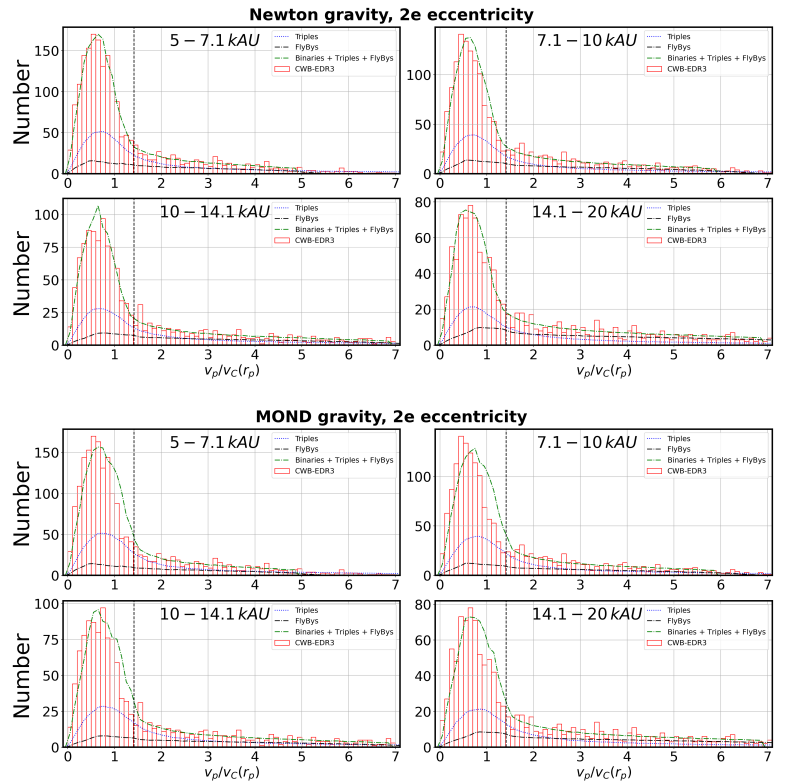
The authors note that these results could be affected by an incorrect modeling of these triple systems and flybys, or the fact that the real wide binary population may not be random and uncorrelated in stellar masses, inclinations, and eccentricities as their simulations were. However, despite these caveats, the data fits force the authors to tentatively conclude that the observations show a clear preference for the Newtonian model over the MOND model tested, to a high degree of formal significance.
The authors also express high hopes for future development of this kind of test. With subsequent GAIA data releases, larger observational sample sizes, and better constrained models and simulations, observations of wide binaries and their orbits could be very interesting prospects for decisively testing models of modified gravity. As such, they plan to expand on these possibilities in future works.
Astrobite edited by Roel Lefever
Featured image credit: European Space Agency

